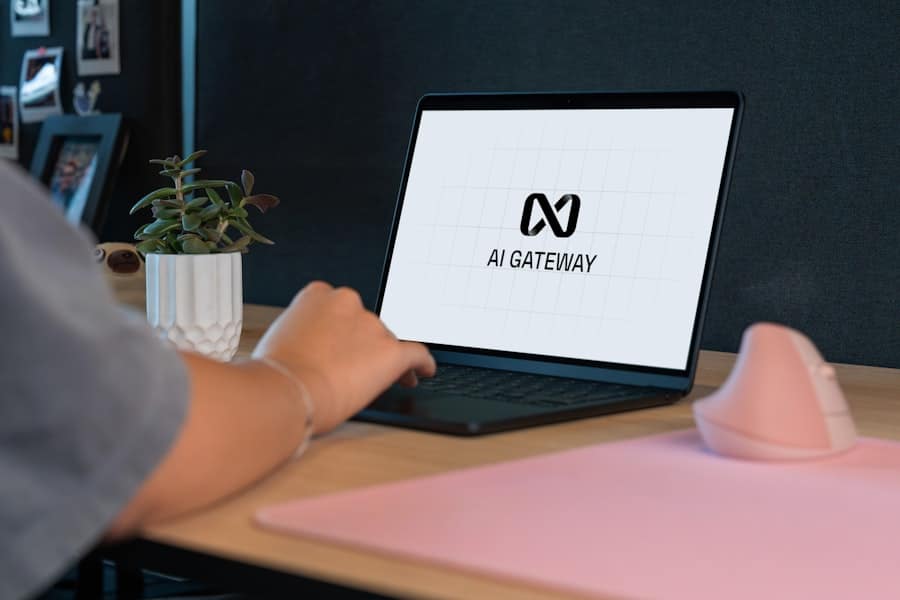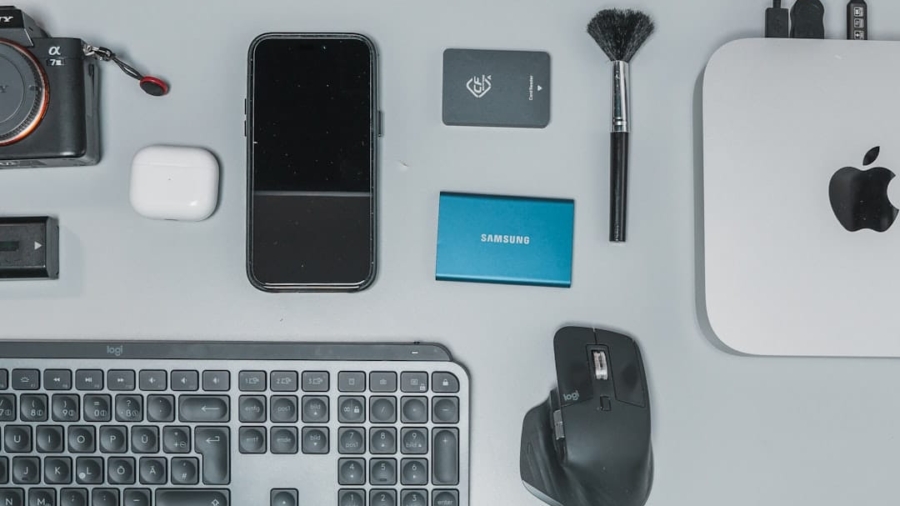Augmented Reality (AR) has emerged as a transformative technology, reshaping how we interact with the digital world. At the intersection of AR and artificial intelligence lies a new breed of personal assistants that promise to enhance our daily lives in unprecedented ways. These AR-enabled personal assistants leverage the power of augmented reality to provide users with contextual information, interactive experiences, and seamless integration into their environments.
By overlaying digital content onto the physical world, these assistants can facilitate tasks ranging from navigation to education, making them invaluable tools in both personal and professional settings. The concept of personal assistants has evolved significantly over the years, transitioning from simple voice-activated systems to sophisticated platforms capable of understanding complex commands and providing tailored responses. With the advent of AR technology, these assistants are no longer confined to screens or speakers; they can now interact with users in a more immersive manner.
Imagine a scenario where a user is cooking a new recipe, and their AR-enabled assistant overlays step-by-step instructions directly onto their kitchen counter, guiding them through the process in real-time. This level of interaction not only enhances user engagement but also improves efficiency and accuracy in task completion.
Key Takeaways
- AR-enabled personal assistants use augmented reality technology to provide users with real-time information and assistance in their daily tasks.
- Current AR-enabled personal assistants are primarily found in mobile devices and smart glasses, offering features such as navigation, object recognition, and contextual information display.
- Advancements in AR technology for personal assistants include improved object recognition, spatial mapping, and gesture recognition, enhancing the user experience and interaction with the virtual environment.
- Integration of AI and AR in personal assistants allows for more personalized and intelligent interactions, enabling the assistant to understand and respond to user needs more effectively.
- Potential applications of AR-enabled personal assistants include virtual shopping experiences, remote assistance, hands-free navigation, and interactive learning experiences, among others.
Current State of AR-Enabled Personal Assistants
As of 2023, the landscape of AR-enabled personal assistants is rapidly evolving, with several key players making significant strides in this domain. Companies like Google, Apple, and Microsoft have invested heavily in AR technologies, integrating them into their existing personal assistant frameworks. For instance, Google Assistant has begun incorporating AR features that allow users to visualize products in their own space before making a purchase.
This capability not only enhances the shopping experience but also provides users with a practical application of AR technology in their everyday lives. Moreover, the proliferation of AR-capable devices, such as smartphones and smart glasses, has facilitated the widespread adoption of these assistants. Devices like Microsoft’s HoloLens and Magic Leap One have demonstrated the potential of AR in professional environments, enabling users to interact with holographic representations of data and applications.
In consumer markets, apps that utilize AR for personal assistance are becoming increasingly popular, with features that range from virtual interior design consultations to interactive fitness coaching. The current state of AR-enabled personal assistants reflects a growing recognition of the technology’s potential to enhance user experience across various sectors.
Advancements in AR Technology for Personal Assistants

The advancements in AR technology have been pivotal in shaping the capabilities of personal assistants. One significant development is the improvement in computer vision algorithms, which allow devices to better understand and interpret the physical environment. This enhancement enables AR-enabled personal assistants to accurately place digital objects within a user’s surroundings, creating a more realistic and interactive experience.
For example, advancements in simultaneous localization and mapping (SLAM) technology have made it possible for devices to map their environment in real-time, allowing for dynamic interactions that were previously unattainable. Additionally, the integration of high-quality sensors and cameras into consumer devices has further propelled the capabilities of AR-enabled personal assistants. Modern smartphones are equipped with advanced depth sensors and high-resolution cameras that can capture intricate details of the environment.
This hardware improvement allows for more precise tracking of user movements and gestures, enabling a more intuitive interaction model. As a result, users can engage with their personal assistants through natural gestures, such as pointing or swiping in mid-air, which enhances the overall user experience and makes technology feel more accessible.
Integration of AI and AR in Personal Assistants
The synergy between artificial intelligence (AI) and augmented reality (AR) is a driving force behind the evolution of personal assistants. AI algorithms enable these assistants to process vast amounts of data, learn from user interactions, and provide personalized recommendations based on individual preferences and behaviors. When combined with AR technology, this creates a powerful tool that can deliver contextually relevant information in real-time.
For instance, an AI-driven personal assistant could analyze a user’s calendar and suggest optimal times for meetings while overlaying visual cues on their workspace to facilitate organization. Furthermore, natural language processing (NLP) plays a crucial role in enhancing communication between users and their AR-enabled personal assistants. By understanding spoken commands and contextualizing them within the user’s environment, these assistants can respond more effectively.
For example, if a user asks their assistant for directions while walking through a city, the assistant can not only provide verbal instructions but also display arrows or markers on the street ahead, guiding the user visually. This integration of AI and AR creates a seamless interaction model that enhances usability and enriches the overall experience.
Potential Applications of AR-Enabled Personal Assistants
The potential applications of AR-enabled personal assistants are vast and varied, spanning multiple industries and use cases. In education, for instance, these assistants can transform traditional learning experiences by providing interactive visualizations that enhance comprehension. Imagine students studying biology who can use an AR-enabled assistant to visualize complex cellular structures or anatomical models right in front of them.
In the realm of healthcare, AR-enabled personal assistants can assist medical professionals by overlaying critical patient information during procedures or consultations. Surgeons could benefit from real-time data displayed directly onto their field of view, allowing them to make informed decisions without diverting their attention from the task at hand.
Similarly, patients could use these assistants for medication management by receiving reminders and visual cues about dosages and schedules directly within their living spaces. The potential for improving efficiency and accuracy in healthcare through AR technology is immense.
Challenges and Limitations of AR-Enabled Personal Assistants

Despite the promising advancements in AR-enabled personal assistants, several challenges and limitations persist that hinder widespread adoption. One significant challenge is the need for robust hardware capable of supporting complex AR applications. While many smartphones are equipped with basic AR capabilities, high-quality experiences often require specialized devices like smart glasses or headsets that may not be accessible to all users due to cost or availability constraints.
Another limitation lies in the development of intuitive user interfaces that can accommodate diverse user needs and preferences.
Users may find it challenging to navigate through multiple layers of information presented in an augmented format, leading to potential frustration or disengagement.
Striking the right balance between providing useful information and maintaining simplicity is crucial for the success of AR-enabled personal assistants.
Ethical and Privacy Considerations in AR-Enabled Personal Assistants
As with any emerging technology, ethical and privacy considerations are paramount when discussing AR-enabled personal assistants. The ability to collect vast amounts of data about users’ behaviors, preferences, and environments raises significant concerns regarding privacy and consent. Users may be unaware of how their data is being utilized or shared with third parties, leading to potential breaches of trust between consumers and technology providers.
Moreover, there are ethical implications surrounding surveillance capabilities inherent in many AR devices. The potential for misuse—such as unauthorized recording or monitoring—poses risks not only to individual privacy but also to broader societal norms regarding consent and transparency. As developers continue to innovate in this space, it is essential to establish clear guidelines and regulations that protect user privacy while fostering innovation.
The Future of AR-Enabled Personal Assistants: Predictions and Possibilities
Looking ahead, the future of AR-enabled personal assistants appears promising as technology continues to advance at an unprecedented pace. One prediction is that we will see an increase in personalized experiences driven by AI algorithms that learn from user interactions over time. These assistants will become more adept at anticipating user needs based on historical data, leading to proactive suggestions that enhance daily life.
Additionally, as hardware becomes more affordable and widely available, we may witness a shift towards ubiquitous AR experiences integrated into everyday devices. Imagine walking through a store where your glasses provide real-time product comparisons or discounts based on your preferences as you browse aisles. Such scenarios highlight the potential for AR-enabled personal assistants to become integral components of our daily routines.
Furthermore, advancements in collaborative features may enable multiple users to interact with shared augmented environments simultaneously. This could revolutionize remote work by allowing teams to collaborate on projects in real-time through shared virtual spaces that blend physical presence with digital enhancements. In conclusion, while challenges remain in terms of hardware limitations and ethical considerations, the trajectory for AR-enabled personal assistants suggests a future where they become indispensable tools that enhance productivity, learning, and overall quality of life across various domains.
As we continue to explore this exciting frontier, it is essential to remain vigilant about privacy concerns while embracing the transformative potential that augmented reality offers.
In exploring the advancements in AR-enabled personal assistants, it’s essential to consider the broader landscape of technology that supports these innovations. A related article that delves into the technological tools enhancing our daily lives is What is the Best Android Health Management Watches?. This article provides insights into wearable technology, which, much like AR-enabled personal assistants, is revolutionizing how we interact with digital information and manage our health. Both technologies exemplify the trend towards more integrated and personalized tech solutions, highlighting the potential for future developments in personal assistant capabilities.
FAQs
What is an AR-enabled personal assistant?
An AR-enabled personal assistant is a virtual assistant that uses augmented reality (AR) technology to provide users with information, guidance, and assistance in a more immersive and interactive way.
How does AR technology enhance personal assistants?
AR technology enhances personal assistants by overlaying digital information and virtual objects onto the real world, allowing users to interact with and visualize information in a more contextual and intuitive manner.
What are the potential benefits of AR-enabled personal assistants?
Potential benefits of AR-enabled personal assistants include improved productivity, enhanced user experience, better contextual understanding of user needs, and the ability to provide more personalized and relevant information.
What are some potential applications of AR-enabled personal assistants?
Potential applications of AR-enabled personal assistants include virtual shopping experiences, interactive navigation and wayfinding, hands-free instructional guides, immersive gaming experiences, and real-time language translation.
What are some challenges and limitations of AR-enabled personal assistants?
Challenges and limitations of AR-enabled personal assistants include technical constraints, privacy concerns, user acceptance and adoption, potential for information overload, and the need for robust and reliable AR hardware and software.

